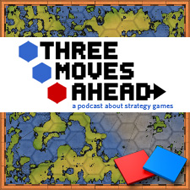If this blog has a recurring motif, it is how history and strategy games are uneasy partners. Despite our tendency to look to the past for analogies and lessons, history is a mess that refuses to conform to rule sets and is constantly under reinterpretation and understanding. Even if “making history come alive” is a goal for many history themed game designers, it is a goal that must always take a seat behind the goals of balance and entertainment.
But designers and gamers bring their own knowledge and expectations about the past with them to any gaming experience. There is a growing understanding between the two groups that no grievous harm will come to history and that things look like they are supposed to.
I’ve written before about the impact that history can have on faction design. Though a lot depends on what a particular game is about, it also appears that game designers try to find a way to make a nation’s perceived character come through in a design even if the game doesn’t necessarily reward that style of play.
Civilization V is only the most recent major historical game to try to capture millenia of historical behaviors in a rule book. RTSes and 4x games alike have worked at making nations seem different from each other but still able to play on the same field. But why are Persian golden ages in Civ 5 doubled in length? The Songhai get triple the gold from capturing cities – where does this come from? When a Formspring question challenged me to design a Canadian Civilization, I immediately fell into imagining what Canada meant to me and how it would be reflected.
The upcoming Europa Universalis III expansion Divine Wind is also wrestling with these ideas. How can they reflect the court politics of China in a model designed around European government? Diplomacy with the horde nations are being entirely re-engineered to reflect that dynamic. Embodying a national history in a game is never easy.
This series of posts will look at national character as portrayed in historical strategy games. What do designers believe, what do I expect, and what do these choices tell us about what some people think is important about a nation?
I would love to write about every nation ever captured in an historical strategy game, but that isn’t really feasible. My patience for my own writing is not inexhaustible. But I need a list to work from, and I will take detours as necessary – my essays on the Aztecs and Zulus will probably include musings on African and pre-Columbian nations in general.
My list? The original canonical list of nations in the first Civilization. Though the factions in that game were interchangeable, it is a good list to start with.
1. America
2. Aztecs
3. Babylonians
4. Chinese
5. Egyptians
6. English
7. French
8. German
9. Greek
10. Indian
11. Mongolian
12. Roman
13. Russian
14. Zulu
15: The Also Rans: Arabia, Japan, and Spain
16: Epilogue
Fifteen major parts…this should be fun.
First up, the land of the free and the home of the brave, America.


